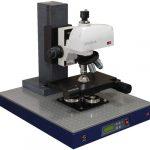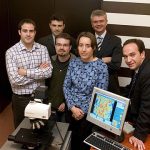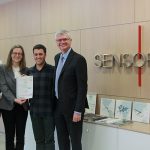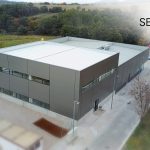Papers at World of Photonics Congress
Sensofar R&D is constantly growing its know-how, technology and system capabilities. These developments are illustrated by Sensofar’s continued activity within and for the scientific metrology community.
Two papers will be presented at the upcoming World of Photonics Congress in Munich, Germany that clearly demonstrate this involvement:
Wed 28 June, 9:00 am, Room 14C, Paper 10329-40
Session 9: Optical Measurement Systems for Industrial Inspection X – High-Resolution Profiling I
‘Confocal unrolled areal measurements of cylindrical surfaces‘
Presenter: Aitor Matilla, MSc (R&D)
Abstract. Confocal microscopes are widely used for areal measurements thanks to its good height resolution and the capability to measure high local slopes. For the measurement of large areas while keeping few nm of system noise, it is needed to use of high numerical aperture objectives, move the sample in the XY plane and stitch several fields together to cover the required surface. Other technologies such are Coherence Scanning Interferometry (CSI) and Focus Variation (FV) are also widely used for the measurement of technical surfaces. Each technology has its own advantages and disadvantages. For instance, Interferometry provides the highest vertical resolution independently of the numerical aperture of the objective, but I has the drawback of being highly sensitive to vibration and requires large amount of acquired images to extract the areal information. Focus Variation has the benefit of being very robust for the measurement of rough surfaces, but it requires high numerical aperture to achieve high vertical resolution. For low magnification objectives, Focus Variation is more suitable for the measurement of the form and waviness components of a surface more than its texture. In this paper we are proposing the measurement of cylindrical surfaces, which in principle can be measured with any of the above technologies. We have selected Confocal as the first step in our research to implement this new acquisition methodology, despite this does not limits the use of CSI or FV in future developments.
Thu 29 June, 2:50 pm, Room 12A, Paper 10334-11
Session 4:Automated Visual Inspection and Machine Vision – Inspection, Monitoring and Detection
‘Automated stent defect detection and classification with a high numerical aperture optical system‘
Presenter: Carlos Bermudez, PhD (R&D)
Abstract. Stent quality control is a highly critical process. Cardiovascular stents have to be inspected 100% so as no defective stent is implanted in a human body. However, this visual control is currently performed manually and every stent could need tenths of minutes to be inspected. In this paper, a novel optical inspection system is presented. By the combination of a high numerical aperture (NA) optical system, a rotational stage and a line-scan camera, unrolled sections of the outer and inner surfaces of the stent are obtained and image-processed at high speed. Defects appearing in those surfaces and also in the edges are extremely contrasted due to the shadowing effect of the high NA illumination and acquisition approach. Therefore by means of morphological operations and a sensitivity parameter, defects are detected. Based on a trained defect library, a binary classifier sorts each kind of defect through a set of scoring vectors, providing the quality operator with all the required information to finally take a decision. We expect this new approach to make defect detection completely objective and to dramatically reduce the time and cost of stent quality control stage.
Full abstracts as well as exact locations and final program of the presentations can be found at SPIE’s webpage.










